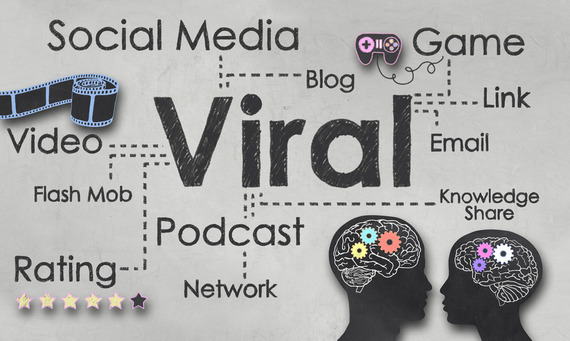Admit it. We've all invested hours into crafting the perfect catchy title and compelling hook for a blog post on a trending topic and thought, "This is it! I'm finally going viral! Internet, here I come!" The inevitable result: our content gets a handful of shares and retweets only to slowly fade away back into obscurity. So what gives? Questionable dress colors and Drake hotline bling memes aside, viral content needs to have three things: it's worthy of being shared, it's easy to share, and it gets an initial sharing boost right out of the gate.
Brian Sutter, the Director of Marketing at Wasp Barcode, has had his fair share of content successes (and fails) over the years. He agrees that marketers need to start with value: "Too often marketers push to produce the next viral video meme and miss the mark altogether. They forget that the need to create content that's worthy of being shared in the first place. It all comes back to value: if the material isn't relevant, it won't be shared. Period."
Here's how to elevate your content to viral status in 2016:
Unpacking the Myth of Viral Content: Value + Sharability + Connections
1. Be clear about your goals: value first, viral second. Everybody wants their content to go viral these days. Right now as you read this, I guarantee that at least one poor Marketing Director is patiently listening to his or her CEO drone on about the need to create viral content. But here's the thing: even if you publish an article or post a video that picks up 50,000 likes, shares or views in just a few days, there's no guarantee that all those views will translate into sales. To create content that's viral AND valuable, you need to know your audience. What topic will be so contagious that publishing a great article or posting a video about it will guarantee its rapid spread? Worried your topic is too "boring" to gain viral momentum? Then grab a current events hook to add relevancy and boost value.
Presentation counts, too. Content that's contagious is relevant, accessible and easily understood thanks to visual elements. You don't have to turn all your content into infographics, but including relevant visuals can add much pizazz to an otherwise mundane topic. Would a lengthy blog post on top trends in male hairstyles go viral? Probably not. However, this male hairstyles infographic puts an engaging spin on the topic and even includes a practical how-to guide for scoring the most popular looks. No wonder this infographic is also certified "viral gold"!
2. Be shareable. "Shareability" counts for a lot. If your content is not packaged in an easy-to-share and easy-to-consume format, it's dead on arrival. I've written before about the importance of "snackable" content for successful content marketing -- small content pieces or tidbits that use a compelling hook to convey your message and bring your audience back for more. It's like grabbing a food sample at the grocery store; it whets your appetite and prompts you to make a purchase. That's exactly the promotion strategy you need to use in order to push your would-be viral content out the door.
Timing matters, too. Post your content at 1 pm for maximum shares on Facebook and retweets on Twitter. Trying to get your Pinterest content to rank highly? Wait until later in the day: peak pinning time is between 8 p.m. and 11 p.m., reports Matt Banner in his "Ultimate Social Media Cheat Sheet". (Pro-tip: If you haven't done so already, download or bookmark this page right now!)
3. Make your connections do the heavy lifting.Small business owners definitely don't have the time to push would-be viral content out the door day in and day out. Once you've published a piece of content (and wisely opted to share it on social media at peak times), personally reach out to your biggest connectors. These are the guys with 10,000 or more followers on Facebook and Twitter who are considered de facto thought leaders; when they post, people take note. Send a personalized direct message to 10 to 20 of your top connectors. Keep the message short and simple: explain why you think this piece of content would be valuable and invite them to share it with their network if they find it to be so.
Bottom line:
Don't overlook the element of surprise, either. "Surprising content" is material that challenges our assumptions about a topic or idea that we were previously convinced we knew inside and out. This surprise doesn't have to be unpleasant; in fact, according to Buzzfeed developer Will Nathan (quoted in this useful post on viral content by Neil Patel), this surprise is generally "something pleasurable". Viral content success, here you come!
